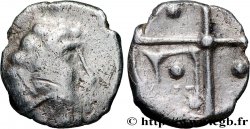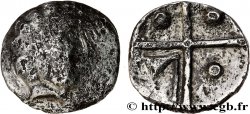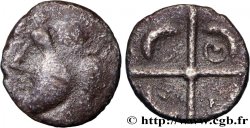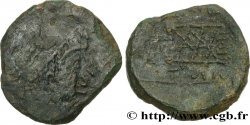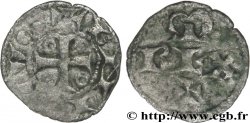v38_1507 - GALLIA - SUDOVESTE DELLA GALLIA LONGOSTALETES (Regione di Narbonne) Drachme “au style languedocien”, S. 374
MONNAIES 38 (2009)
Начальная цена : 500.00 €
Назначить цену : 750.00 €
непроданный лот
Начальная цена : 500.00 €
Назначить цену : 750.00 €
непроданный лот
Тип Drachme “au style languedocien”, S. 374
Дата: IIe siècle av. J.-C
Металл: silver
Диаметр: 15,5 mm
Ориентация осей монеты: 3 h.
Вес: 3,59 g.
Редкость: R3
Комментарии о состоянии
Drachme très agréable, frappée sur un flan large et irrégulier. Droit et revers homogènes et complets avec une très fine patine grise légèrement tachée par endroits
Лицевая сторона
Аверс: легенда: ANÉPIGRAPHE.
Аверс: описание: Tête à droite avec cheveux en esses et mèches ovoïdes ; un chignon derrière la nuque ; œil de face ; oreille ; cou épais et nu.
Обратная сторона
Реверс: легенда: ANÉPIGRAPHE.
Реверс: Описание: Croix non bouletée, divisée en quatre cantons : besant aux 1er, 2e et 4e cantons ; une hache pleine triangulaire à gauche au 3e canton.
Комментарий
La série VI (présumée de l'Ouest) regroupe plusieurs monnaies variées avec comme point commun les trois besants et une croix non bouletée. Toutes les monnaies de ce type S. 374 semblent avoir été frappées avec un seul et unique coin de droit (caractéristique avec la cassure de coin sur le nez), mais au moins deux coins de revers (reconnaissables avec les petites cassures autour du globule du premier canton).
Series VI (presumably from the West) includes several different coins with the common feature of three bezants and an unballed cross. All coins of this type S. 374 appear to have been struck with a single obverse die (characteristic with the die break on the nose), but at least two reverse dies (recognizable by the small breaks around the globule of the first canton)
Series VI (presumably from the West) includes several different coins with the common feature of three bezants and an unballed cross. All coins of this type S. 374 appear to have been struck with a single obverse die (characteristic with the die break on the nose), but at least two reverse dies (recognizable by the small breaks around the globule of the first canton)








 Cообщить об ошибке
Cообщить об ошибке Распечатать страницу
Распечатать страницу Отправить мой выбор
Отправить мой выбор Задать вопрос
Задать вопрос Consign / sell
Consign / sell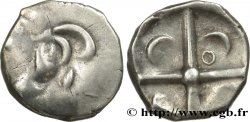
 Информация
Информация